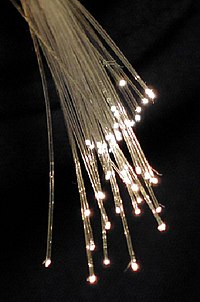
Photo from wikipedia
A novel rotational angle microwave sensor with a high dynamic range and sensitivity for detecting angular displacement is presented. It exploits the spectral separation between two notch frequencies or transmission… Click to show full abstract
A novel rotational angle microwave sensor with a high dynamic range and sensitivity for detecting angular displacement is presented. It exploits the spectral separation between two notch frequencies or transmission zeros that are generated in its transfer function, and whose value varies as a function of the rotation angle to be measured. The sensor is based on a bi-path transversal-signal-interference (TSI) circuit configuration that is implemented on microstrip technology, where a rotor comprised of an open-circuit-ended stub is loaded onto a stator of this transversal circuit with equal-length electrical paths. The mechanical rotation of the rotor changes the contact point of the open-circuit-ended line to the stator, thus effectively modifying one of the overall paths of the stator and, hence, the inter-transmission-zero separation. Design guidelines for the synthesis of the proposed rotation sensor with a specified dynamic range and sensitivity are provided. Furthermore, a proof-of-concept microstrip-substrate-based prototype with an angular rotation range of 180° is developed at 920 MHz and tested to validate this approach experimentally.
Journal Title: IEEE Sensors Journal
Year Published: 2020
Link to full text (if available)
Share on Social Media: Sign Up to like & get
recommendations!